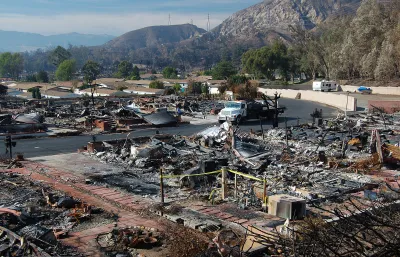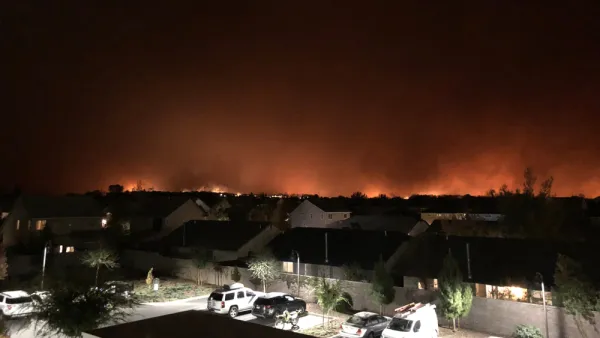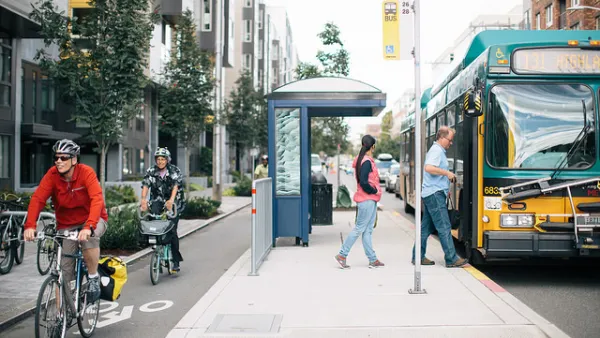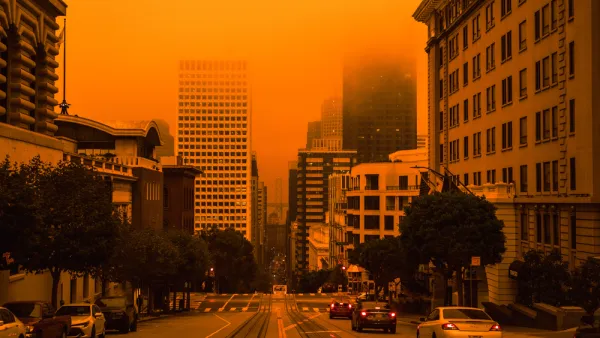As development pushes into more wildfire-prone areas and climate change makes extreme weather conditions more common, more Americans are experiencing the destructive impacts of climate disasters.

Last year, over 40 percent of Americans lived in counties struck by climate change-induced extreme weather events, while more than 80 percent experienced at least one day of extreme heat, according to research from The Washington Post, report Sarah Kaplan and Andrew Ba Tran.
Disasters affected regions across the country, with wildfires ravaging the West, heat waves killing hundreds in the Pacific Northwest, and hurricanes causing massive damage on the East Coast. "In the country that has generated more greenhouse gases than any other nation in history, global warming is expanding its reach and exacting an escalating toll."
In a steadily warming world, disasters can happen in places, at times and with intensities never seen before. They overwhelm infrastructure that wasn’t built to deal with them. They catch communities unprepared.
While some disasters—such as the deep freeze that paralyzed Texas infrastructure or the outbreak of tornadoes in Kentucky—can't be attributed to climate change, according to scientists, the record-breaking Pacific Northwest heat dome would not have been possible without it.
The authors note that climate change isn't the only way humans are contributing to more destructive disasters. Some factors, like development in high-risk areas, human-caused ignition sources, and exposed power lines can be mitigated with local land use regulations, public policy, and awareness campaigns. While fighting climate change takes a global effort, policymakers can also make impactful changes on a local scale by taking action to implement forward-looking policies and help residents build strong social support systems to help each other during a crisis.
FULL STORY: More than 40 percent of Americans live in counties hit by climate disasters in 2021

Analysis: Cybertruck Fatality Rate Far Exceeds That of Ford Pinto
The Tesla Cybertruck was recalled seven times last year.

National Parks Layoffs Will Cause Communities to Lose Billions
Thousands of essential park workers were laid off this week, just before the busy spring break season.

Retro-silient?: America’s First “Eco-burb,” The Woodlands Turns 50
A master-planned community north of Houston offers lessons on green infrastructure and resilient design, but falls short of its founder’s lofty affordability and walkability goals.

Test News Post 1
This is a summary

Analysis: Cybertruck Fatality Rate Far Exceeds That of Ford Pinto
The Tesla Cybertruck was recalled seven times last year.

Test News Headline 46
Test for the image on the front page.
Urban Design for Planners 1: Software Tools
This six-course series explores essential urban design concepts using open source software and equips planners with the tools they need to participate fully in the urban design process.
Planning for Universal Design
Learn the tools for implementing Universal Design in planning regulations.
EMC Planning Group, Inc.
Planetizen
Planetizen
Mpact (formerly Rail~Volution)
Great Falls Development Authority, Inc.
HUDs Office of Policy Development and Research
NYU Wagner Graduate School of Public Service




























